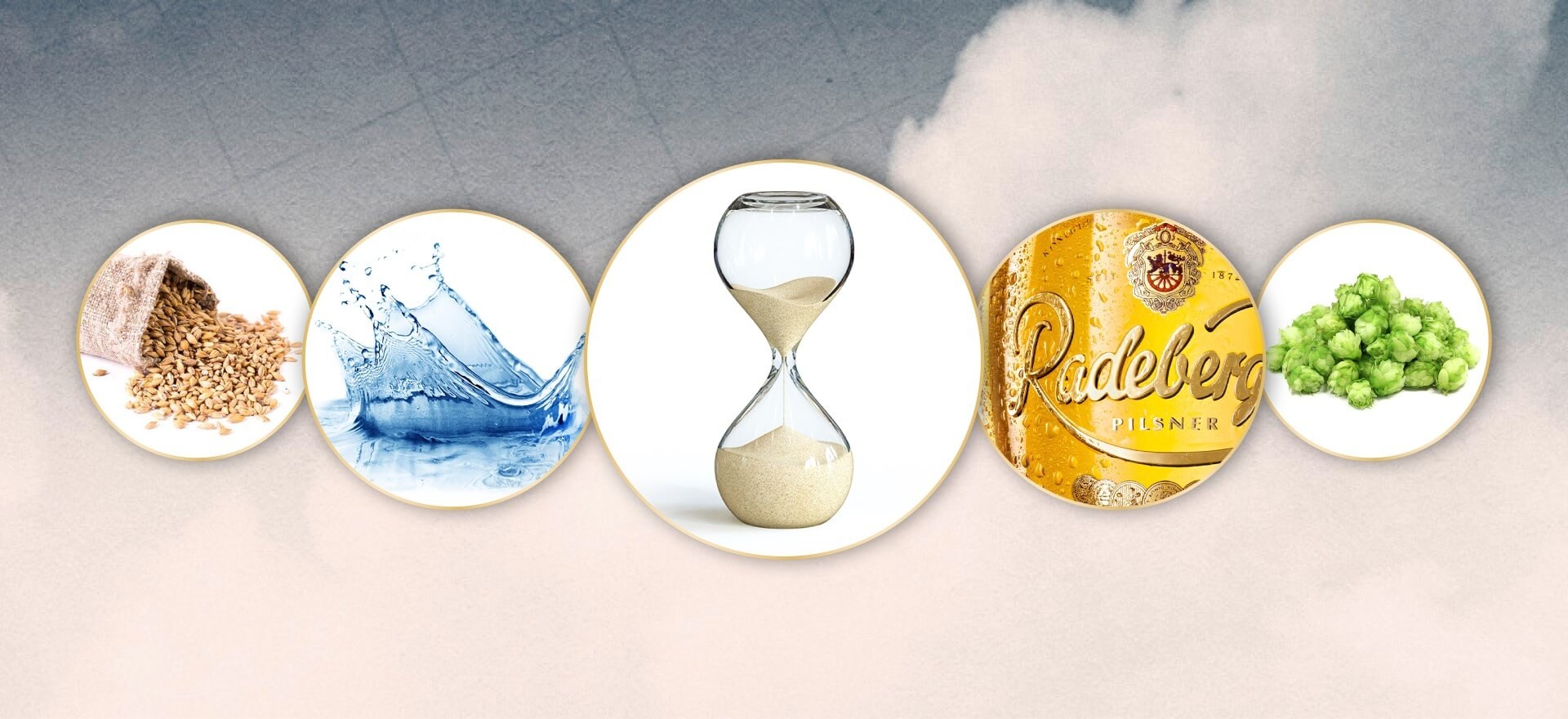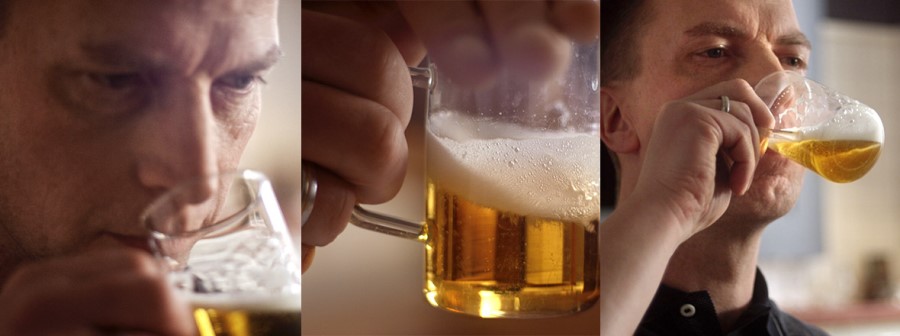A Radeberger is born.
Find out here how a Radeberger is created – and discover the crucial role played by time in the development of our beer’s signature taste.
A Radeberger is born.
1. Grinding, mashing, lautering and boiling – the first few steps of the brewing process come thick and fast in the brew house and are timed to the minute.
A Radeberger is born.
2. Although the wort produced in the brew house really deserves a break, it first has to ferment for about eight days. In the process, yeast and maltose are converted into alcohol and carbon dioxide, giving rise to ‘green’ (non-matured) beer.
A Radeberger is born.
3. Diacetyl is released during the fermentation process. This substance is responsible for a buttery-sweet beer aroma. We, however, prefer sophisticated hoppy bitter notes and therefore reduce the amount of diacetyl so that you can’t taste it.
A Radeberger is born.
4. The non-matured beer cools from its fermentation temperature of 14°C to its storage temperature of 4°C.
A Radeberger is born.
5. The maturing period commences – and clouding substances such as yeast, protein and hop resins gradually disperse. Towards the end of the maturing period, the yeast transforms the bouquet aromas in the immature beer – which have a harsh and unsophisticated taste – into agreeable aromas. With this in mind, we give our Radeberger all the time it needs to develop its rich and full-bodied taste.
A Radeberger is born.
6. In the final step, the residual yeast cells and clouding substances are filtered out. As a result, Radeberger Pilsner gains its clear colour and its bright golden glow. It is now ready to be shipped to retailers and restaurants.

